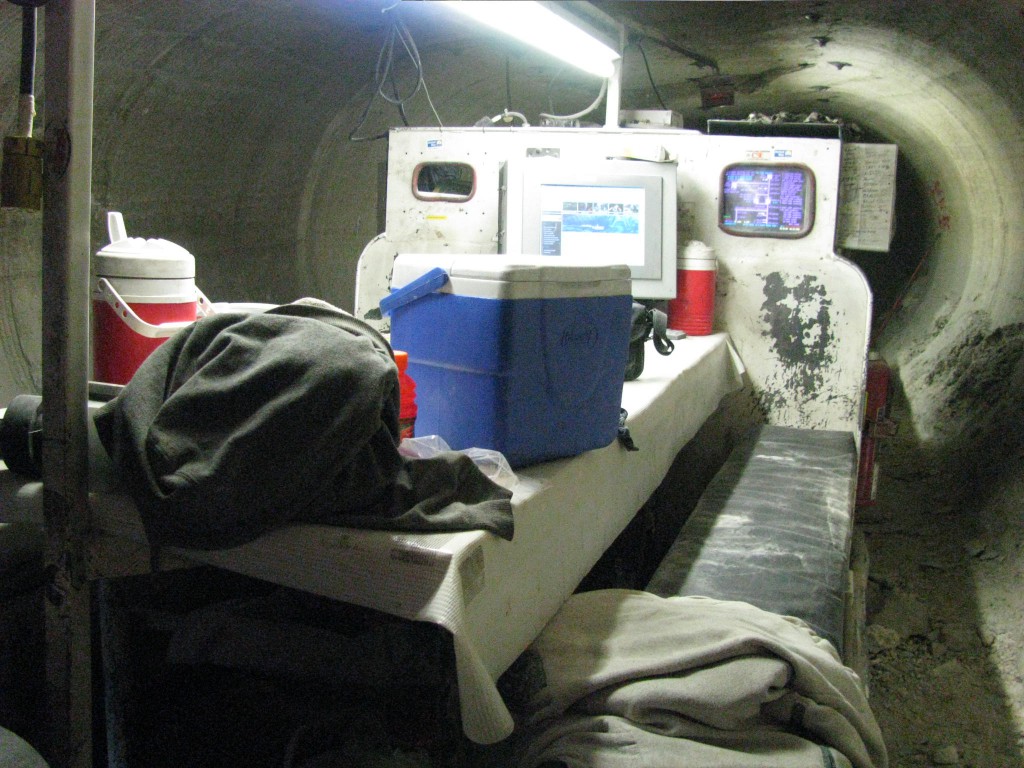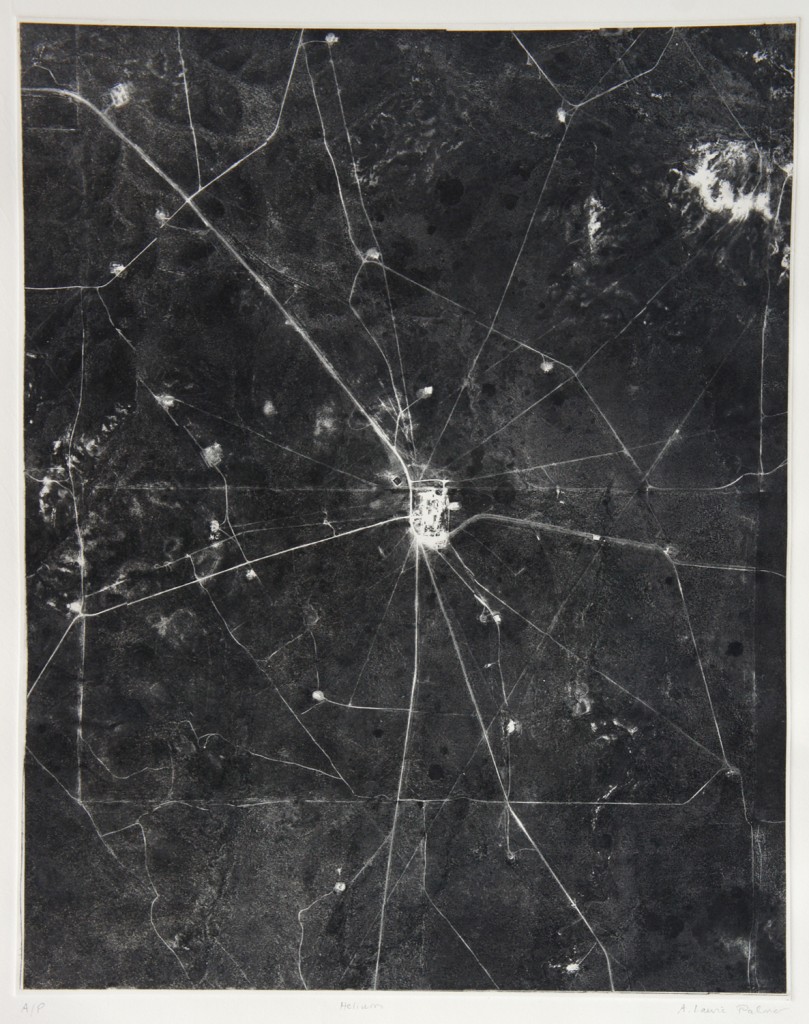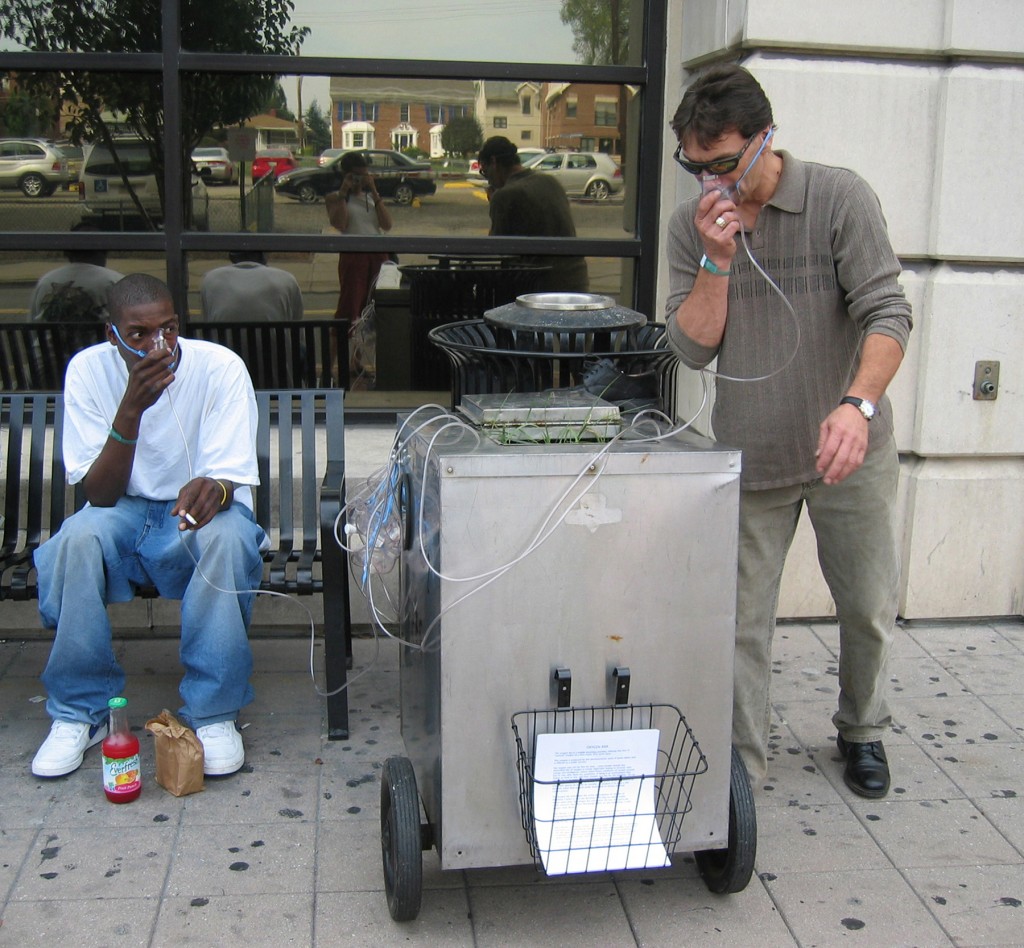Coming to Chicago marked my first awakening into the world of contemporary art; for the first time, I discovered a whole working community of people engaged in a dialogue. These singular voices nevertheless resound in congress, creating a multi-focused, multifaceted din. Recognizing Laurie Palmer’s work was coincident with my sense of this new world; like the macrocosm I just described, her individual practice is its own tapestry comprised by various threads. Her work with Haha — a group she has been working with for almost 20 years now — was included in lectures about collaborative, political practice at school. She has an impressive solo sculptural career as well, and I came across her critical writing in magazines like Art Forum. Hers is a rich and diving kind of work, one that reaches into and underneath the material she uses. The fruit of this process manifests in an experience somehow aesthetic, educational, and (often) political. In the following interview we focus almost entirely on materiality, examining in part the self within that — where and how it might be singular or multiple.
Caroline Picard: I know that you’re working on a book about mineral extraction that’s on review for publication. Can you talk a little bit about that book?
Laurie Palmer: It seems like (and it is!) many years that I have been working on this book project. It started as a way to learn about materials and where they come from and it became a rationale to read voluminously and to teach myself about chemistry, geology, astrophysics, and philosophies of matter as well as histories of mining, U.S. land surveys, and environmental policy. It is organized around 18 chemical elements, and the places that I visited where these elements are extracted.
I thought that by starting with the specificity of a time and a place in each chapter, I could rein in the dizzying expansion that the broad hunger to tackle matter ushered in—that the writing wouldn’t have to explode out of control. I have to say that it did, in fact, explode out of control, and I am re-writing it, pulling in on the reins. The writing process has been very difficult. I thought I could approach writing the earth (geo-graphy) like I approached art writing, which was never, ever easy but eventually I could find satisfaction. But with this—I got stuck for a long time. Conditions and practices have changed at each site, in some cases dramatically, but my revisions now are not about trying to keep up with these changes, and instead about altering the initial ambition, clarifying its goals and, actually, making the book more visual.

Laurie Palmer. "Lunchroom, Trona Mine, Green River, WY." Digital image from "Eating the Earth," (book project), 2008.
The primary desire in the book is to explore matter’s agency, or how it and us are entangled. In these many years I have encountered the work of writers who articulate sympathetic understandings of agentic materiality from a variety of disciplinary perspectives, including Jane Bennett in political science, and Karen Barad, in physics and feminist studies (who uses the term “entanglement” to great effect.) To contribute to this conversation from yet another perspective, I have been trying to develop a kind of writing that is continuous with my art practice: it is concrete and associative, making connections that are not necessarily logical, analytic, or plot-driven but that construct an interpretation through “thick description” —like painting a portrait.
I began to integrate writing into various art projects a while ago; my practice had already strayed with the 3 Acres/DuSable Park project, which I also understood as art work, even though what I made was a frame and a platform for others to make work in relation to. All of the questions that have come up in writing the book are the same questions that come up in art practice, but OK, maybe dealing with them in language is simply a different beast. Maybe it is the conceptual organization of the book that makes it feel like an art work, or an artist’s book. I have had this argument with artist friends. In any case I had made a promise to myself to focus just on writing for a while, and it was much harder than I had thought. It doesn’t have to be, but I seem to have to destroy most things that I make a few times before they can walk away, this is simply something I know about my practice, and this is the most extreme example because it is the most ambitious project so far. When can it be called a failure? I am not willing to go there. At least I know the book will be published and then the next project will flow from that.
CP: You have such a multi-faceted artistic life — from writing critical art reviews, to extensive, ongoing collaborations (like Haha, for instance), to teaching at the Art Institute, and then of course your own, singular, sculptural work and book-writing. How do these different elements collude and conspire with one another?
LP: If you think of a self as a system, constituted through its connections, extending outward through those lines of connection and being fed by them, then all the things you mention (and more) create a practice that is less about constructing an (artistic) identity and more about using a body for what it can do—plugging it in, experimentally. I want to use my self, while I am here, for whatever it can do— but I am always, still, trying to learn how to do this.
Writing about other people’s work, teaching, and making my own work, including collaboratively, are all facets of the same thing. Culture is a collective project. I am moved and inspired by other people’s work and then I don’t have to make that work, because they have, but other work becomes necessary, partly in response, partly in collusion. I am in awe of my students and feel acutely the privilege of access to their creative processes. Teaching turns you inside out—this motion is exhilarating, and exhausting. Writing is portable (which has been useful over the last eight years as I negotiate a long-distance, long-term love) but it’s evaporatory. Making visual art leaves material traces, even if you unmake along the way, time becomes visible. But you have to have somewhere to put those things.
Your question taps into one of my current pressing questions, about will—what is it? Where does it reside in the body? Or is it external to the body? If I think of matter as “willful,” agentic, then how does that extend to the body I call my own? In other words, I want to collaborate on multiple levels, including with the demands of a self that wants the world to change and wants to be changed with it but a self that can’t be reduced to this willfulness, that has always something else coursing through it, exceeding knowing, and asking (too) for respect.
At a panel discussion many years ago someone asked me with a little bit of hostility: “What will happen when you run out of ideas?” (or in other words, how can you continue to develop your work as an artist if each project is different than the next, and requires different skills?). He was comparing what he understood as a conceptually-driven practice with a medium-based practice, assuming that a painter for instance always has the material pleasures and constraints of paint to fall back on when inspiration runs thin. This question might seem old-fashioned now but it stuck with me for a long time, not because I have ever felt that there was some way I had to be as an artist (determined from the outside) but because I did worry, what if ideas (which are desires) do run out? It simply hasn’t been a problem so I have stopped worrying about that, but the question of discipline arises all the time, and it is a real question. I was a printmaker for many years. What is my discipline now, if I can understand writing as continuous with it? What is the project that I imagine all these facets contributing to? Being alive? We learn this discipline by practicing.
Clearly mine is not the point of view of someone who is (primarily) plugging their work into an art market that requires the construction of a coherent artistic identity to support the work’s value. It could be understood as the point of view of someone who plugged herself into an academic market a while ago, and who is negotiating the unfolding demands of that decision (on time, on ambition, on desires), as well as the privileges. It is a privilege to try to conceive one’s artistic life systemically or collectively, given the contexts for supporting art that currently exist. But then again there is a lot more room for practicing other models, and bringing them into being, than we allow ourselves to believe.
The most difficult question for me is not about collaboration versus singular production, but how to navigate the relationship between my political desires and my individual studio practice? At the moment I am thinking of activism and art as (for me) separate activities that can sometimes be allies—carefully, tactically. Chicago Torture Justice Memorials hopefully is one example of such an alliance.
CP: How do you approach your studio as an individual artist? And how does that strategy compare with your approach to collaborative scenarios?
LP: I haven’t always had a studio, they have come and gone. Recently I started renting a big space three blocks from home. I am in love with this studio. It bathes me with kisses when I open the door. I just want to sit there, or stand there, or lie on the floor there. (The floor is really dirty.) The space is pure potentiality and if you add time to the mix, it becomes actuality too—things and ideas do materialize there if I spend time. It is also a place to put things. Haha’s taxi sign is there, many of the supplies for Chicago Torture Justice Memorials design workshops get stored there, the carts used for “White Girls with Green Stuff,” teaching supplies….Not to sound pedantic but we are singular and multiple, simultaneously (to quote a phrase). Very simply, I use the studio as a space to imagine, to think, to build. Collaborations start with conversations and develop anywhere. I happen to need a lot of alone time as a base line for all operations, and it has been in short supply lately, which is why I kiss this space back when I can get there.
CP: Is there some map you have, some idea, as to how we might save the world?
Maybe the first step is including ourselves in it. The authors of The Coming Insurrection offer a great analysis of how we are able to ignore the environmental devastation that we have created and that we are living (in) by creating a word and a concept—“the environment”—that doesn’t include us, but is instead separate from us.
I understand “the world” as a moiling and fluxing potentiality that we have no way to fully comprehend or determine, even as there are threads and knots and vectors with inertia and direction that we can partly know, and partly predict, and perhaps learn to develop collaborative relationships with. The world is making itself always, and we are subsumed inside of that constant process. I see hope in shifting our approach from one of wanting to know and control everything to one of collaboration—giving it up to what we can’t know, including those unknowable parts of ourselves and of the social body, as well as mineral, bacterial, climactic and other systems (that we are not doing things to, but with). Which is not the same as giving up.








Pingback: An interview with Laurie Palmer | The Lantern Daily